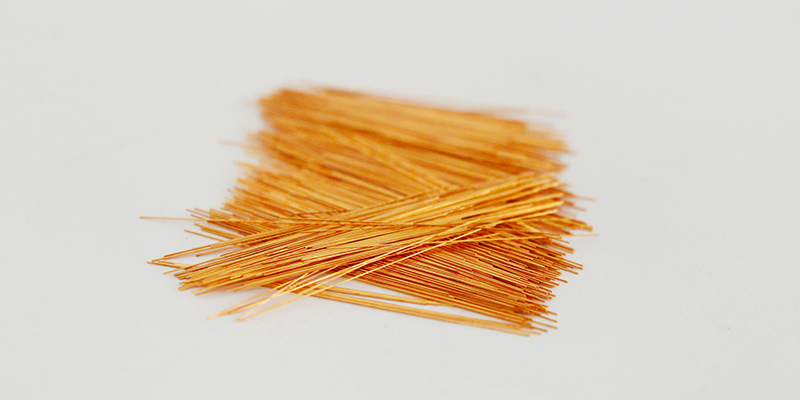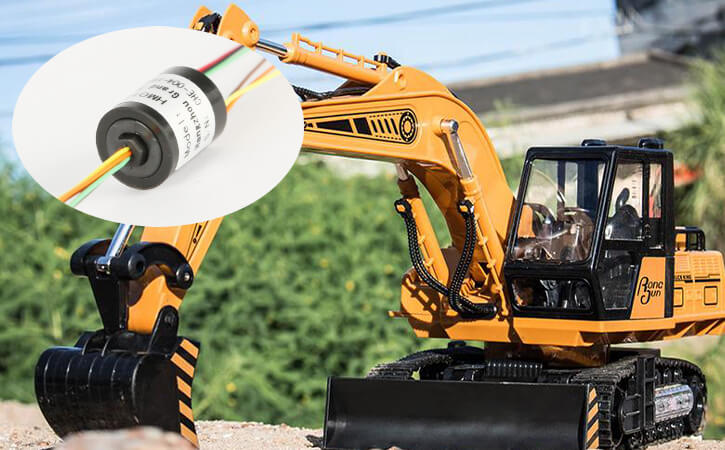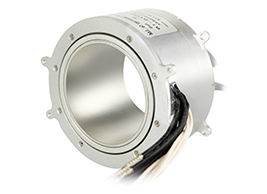In modern crane slip ring technology, slip rings and cranes are two of the most crucial pieces of machinery which are almost inseparable.
Slip rings are nothing but interlinking electrical devices which provide connectivity between stationery and a revolving system. They are also called electrical rotary joints, rotating electrical connectors, or electrical swivels.
They’re highly used at times when power or electrical signals need to be transmitted while rotating. However, they are also utilised in many types of machinery like cranes to improve their efficiency and performance.
As cranes are heavy-duty machines with moving parts like grabs and jib arms that need reliable power and data transmission for lifting and lowering material.
It requires crane slip rings to help with the movement, especially when a drag chain would get in the way or when it needs to turn more than 360 degrees.
How Does the Slip Ring Work
Components of Slip Rings
Metal rings and brush contact are the two main integral parts of slip rings. Common slip rings include capsule slip ring, Pin slip rings, USB slip rings, high speed slip rings.
a. Metal Rings
The circuit path is made by the ring, which is made of an electrically conductive material like metal, brass, silver plating, or coin silver. The ring is usually attached to a centre shaft but is insulated from it.
Between the rings and the shaft, there is insulation made of nylon, phenolic plastic, or another material that is a bad conductor of electricity.
The number of rings and brushes is decided based on the application and design of the machine.
b. Brushes
Brush arms are attached to side posts that ride on the ring to create electrical contact between the revolving and stationary portions of the unit.
They consist of graphite or phosphor bronze. Whereas, graphite is an inexpensive alternative whereas phosphor bronze provides superior conductivity and better wear life.
Arrangements and Electrical Current Transmission
- Depending on the RPM (turns per minute), either the brushes are fixed and the rings turn, or the rings turn and the brushes are fixed.
- In both of these designs, the springs push on the brushes to keep them in contact with the ring.
- Most of the time, rings are attached to the rotor and turn which are made up of metallic and non-metallic materials, while brushes are fixed to the brush house and don’t move. Moreover, a set of ball bearing inside the housing supports the rotor.
- Rings are made of metals that conduct electricity, like brass and silver. They are mounted on a shaft, but the centre shaft keeps the two parts from touching.
- Nylon or plastic keeps the rings from touching each other.
- The electrical current flows through the brushes as the rings turn.
- This keeps the connection between the rings (the rotating system) and the brushes going all the time (fixed system).
- The most important thing to note in slip rings working is that temperature, power, weight, size, and cost are the most pivotal factors in material choice. As, the electrical components discussed here are typically made of highly conductive materials for a variety of reasons, including voltage, current density, resistance changes, rotation speed, bandwidth, and so on.

How to Use Slip Rings in Cranes
Why is a slip ring induction motor used in a crane?
Slip ring induction motors are commonly used in cranes due to their unique features and operational advantages. These motors provide the necessary torque and control required for the heavy lifting and precise movements involved in crane operations.
High Starting Torque
One of the primary reasons slip ring induction motors are favored in cranes is their ability to provide high starting torque. Cranes often have to lift heavy loads from a standstill, requiring a significant amount of initial force. Slip ring induction motors achieve this by using external resistors connected to the rotor circuit, which can be adjusted to control the torque and speed during startup. This feature is crucial for ensuring smooth and safe lifting operations.
Smooth Acceleration and Deceleration
Slip ring induction motors offer superior control over acceleration and deceleration. The external resistors used in the rotor circuit can be gradually adjusted, allowing for smooth transitions between different speeds. This capability is essential for crane operations, where sudden movements can cause instability and potentially lead to accidents. Smooth acceleration and deceleration help in precise positioning and handling of loads, enhancing overall safety and efficiency.
Versatile Speed Control
These motors provide excellent speed control, which is vital for the varied tasks cranes perform. The external resistors in the rotor circuit allow for fine-tuning of the motor speed, enabling cranes to operate at different speeds depending on the load and required precision. This versatility in speed control makes slip ring induction motors ideal for cranes used in various applications, from construction sites to industrial warehouses.
High Overload Capacity
Cranes often encounter situations where they need to handle loads beyond their normal capacity. Slip ring induction motors have a high overload capacity, meaning they can handle temporary increases in load without damaging the motor. This feature ensures reliability and durability, as the motor can withstand the demanding conditions typical in crane operations.
Enhanced Operational Efficiency
The ability to control torque and speed effectively leads to enhanced operational efficiency. Slip ring induction motors minimize energy losses during startup and allow for better control over the crane’s movements, resulting in less wear and tear on mechanical components. This efficiency translates to reduced maintenance costs and longer lifespan for both the motor and the crane.
Application Flexibility
Slip ring induction motors are adaptable to various crane designs and configurations. Whether used in overhead cranes, tower cranes, or gantry cranes, these motors provide the necessary performance and control. Their adaptability makes them a versatile choice for crane manufacturers and operators, meeting the diverse needs of different lifting applications.
Slip ring induction motors are used in cranes because they offer high starting torque, smooth acceleration and deceleration, versatile speed control, high overload capacity, enhanced operational efficiency, and application flexibility. These features make them well-suited for the demanding and precise nature of crane operations, ensuring safety, reliability, and efficiency in lifting heavy loads.
Types of Slip Rings Requested for Cranes
Slip rings are essential components in cranes, enabling the transfer of power and signals from stationary to rotating parts. Different types of slip rings are requested for cranes based on their specific applications and operational requirements. Here are some common types of slip rings used in crane operations:
Hydraulic Slip Rings
Hydraulic slip rings are used in cranes where hydraulic power needs to be transferred through rotating joints. These slip rings are designed to handle hydraulic fluids, ensuring seamless transmission of hydraulic power to various crane components. They are particularly useful in cranes that rely on hydraulic systems for lifting and maneuvering heavy loads.
Pneumatic Slip Rings
Pneumatic slip rings are employed in cranes that use compressed air systems. These slip rings facilitate the transfer of compressed air from the stationary part of the crane to its rotating sections. Pneumatic slip rings are essential for cranes that utilize pneumatic actuators and tools, ensuring continuous and reliable air supply.
High Voltage/High Current Slip Rings
High voltage and high current slip rings are critical for cranes that require the transmission of substantial electrical power. These slip rings are designed to handle high voltage and high current loads, ensuring safe and efficient power transfer. They are commonly used in cranes that operate heavy-duty electrical equipment or require significant electrical power for their operations.
Ethernet Slip Rings
Ethernet slip rings are used in cranes that require high-speed data transfer for communication and control purposes. These slip rings support Ethernet protocols, enabling real-time data exchange between different parts of the crane. Ethernet slip rings are essential for modern cranes equipped with advanced control systems, sensors, and monitoring devices.
USB Slip Rings
USB slip rings facilitate the transfer of USB signals between stationary and rotating parts of the crane. These slip rings are used in cranes with USB-enabled devices, such as cameras, sensors, and control interfaces. USB slip rings ensure continuous and reliable communication, enhancing the crane’s operational capabilities.
Fiber Optic Rotary Joints (FORJ)
Fiber optic rotary joints are used in cranes that require high-speed and high-bandwidth data transfer. These joints facilitate the transmission of optical signals, ensuring minimal signal loss and interference. Fiber optic rotary joints are crucial for cranes that rely on sophisticated communication systems and high-resolution video feeds.
Capsule Slip Rings
Capsule slip rings are compact and versatile slip rings used in various crane applications. They are suitable for transmitting power and signals in confined spaces, making them ideal for cranes with limited installation areas. Capsule slip rings offer reliable performance and are easy to integrate into crane systems.
8. Mercury Slip Rings
Mercury slip rings are used in cranes that require low-resistance and high-reliability connections. These slip rings use liquid mercury to maintain electrical contact, providing smooth and uninterrupted power transfer. Mercury slip rings are suitable for applications where minimal electrical noise and high conductivity are essential.
Crane Slip Rings
Specifically designed for crane applications, these slip rings are built to withstand the harsh operating conditions typically encountered in crane operations. They are robust, durable, and capable of handling the mechanical stresses and environmental factors present in crane environments.
Rotary Unions with Electrical Slip Rings
These slip rings combine the functions of electrical slip rings and rotary unions, allowing for the transfer of both electrical power and fluids. They are used in cranes that require simultaneous transmission of electrical signals and hydraulic or pneumatic power. This combination enhances the crane’s versatility and efficiency.
The types of slip rings requested for cranes vary based on the specific operational requirements and the nature of the tasks performed by the crane. From hydraulic and pneumatic slip rings to high voltage, Ethernet, and fiber optic rotary joints, each type of slip ring plays a crucial role in ensuring the smooth and efficient operation of cranes in various industries.
Frequently Asked Questions
What is a Slip Ring and Why is It Used
Slip rings are electromechanical devices that allow electrical power and signals to be sent from a fixed point to a rotating object. They are used to simplify system operation or increase mechanical performance.
What is the Main Advantage of Slip Rings
Slip rings are very important because they let a machine or device turn while keeping an electrical connection. This means that there is no need for a fixed-length cable that would get twisted or tangled as the machine or device turned.
What Are the Advantages of Using Slip Rings on Cranes
When crane slip rings are used, power and data can be sent quickly and reliably between the stationary control system and the moving parts of the crane. Slip rings also give the crane the most flexibility and the ability to control and change how fast it turns.
What Types of Slip Rings Are Commonly Used on Cranes
Gold wire technology slip rings, like the Rotar X, are the most common type of slip ring used on cranes. These crane slip rings are made to last and work without problems in heavy-duty situations.
What Are Slip Rings Made Of
Slip rings are often formed of conductive metals like brass and silver, with graphite or phosphor bronze brushes.

What Are the Maintenance Requirements for Slip Rings on Cranes
Slip rings on cranes must be serviced regularly to guarantee maximum operation. This involves inspecting, cleaning, and lubricating the slip rings and brushes regularly to avoid wear and guarantee dependable operation.
Crane slip rings and their usage on cranes in the field of heavy machinery are profound. Their specific application usage, especially with hydraulic rotary unions and fibre optic rotary joints (FORJs) ensures that power and data are sent without any problems in the crane technology.
The advent of crane slip rings has changed the crane industry by making it possible to use cranes indoors and outdoors safely and efficiently.
However, crane slip rings require regular maintenance to guarantee maximum performance, but with appropriate care and upkeep, they may provide years of dependable service in the same.
See What We Can Do


